Pictures & story by Mansoor Ladha
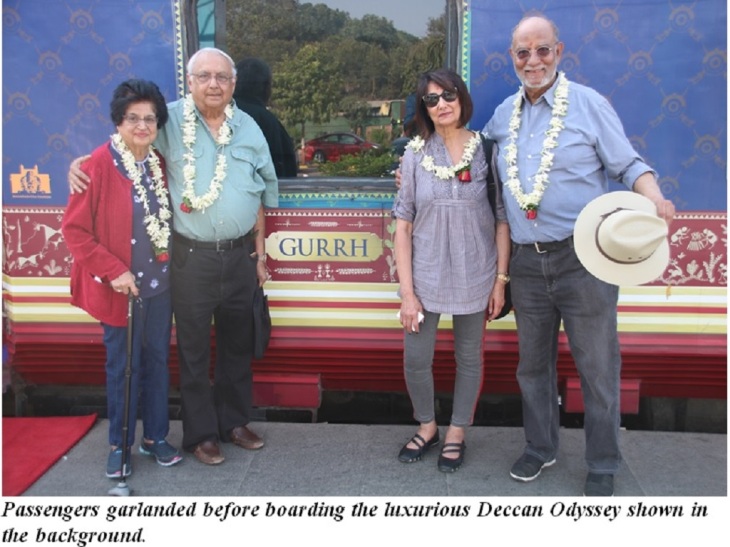
Sound of drums filled the air with young men in colourful traditional attire and women dressed in multi-coloured saris greeted us as we entered Mumbai’s Chhatrapati Shivaji train terminus to board the luxurious seven-day Deccan Odyssey.
A portion of the train station was cordoned off for Odyssey passengers and an area was allocated for them to undergo immigration and other formalities. Those who cleared their paper work were garlanded and were given a welcome drink and seated in a special area.
Called the Maharashtra Splendor, the journey portrayed the opulence and extravagance of the palaces, the traditions and culinary wonders of cities and villages and took us to a magical ride to places of mystery and wonder, travelling in style like a Maharajah. Since the advent of the railways in India, Indian royalty and British aristocracy have been setting on a shikaar (hunting expeditions) or on celebrations in wilderness, deserts or mountains, travelling in the luxury of their private palace on wheels. The same royal treatment is now available to an average tourist to India.
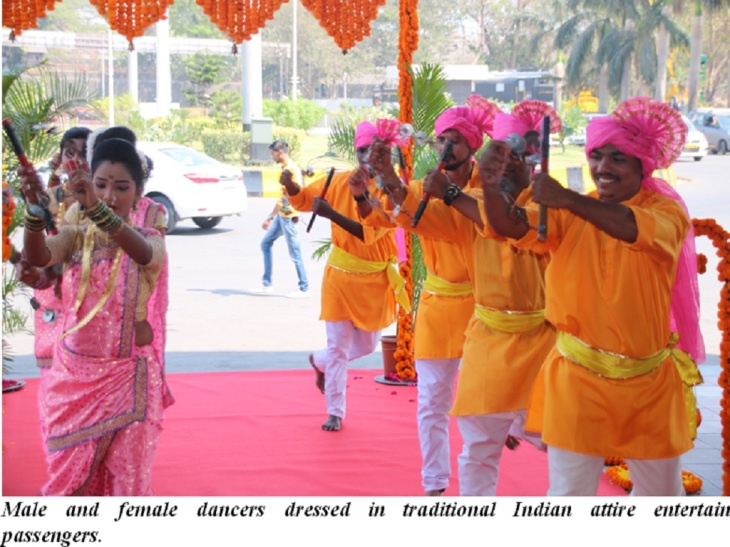
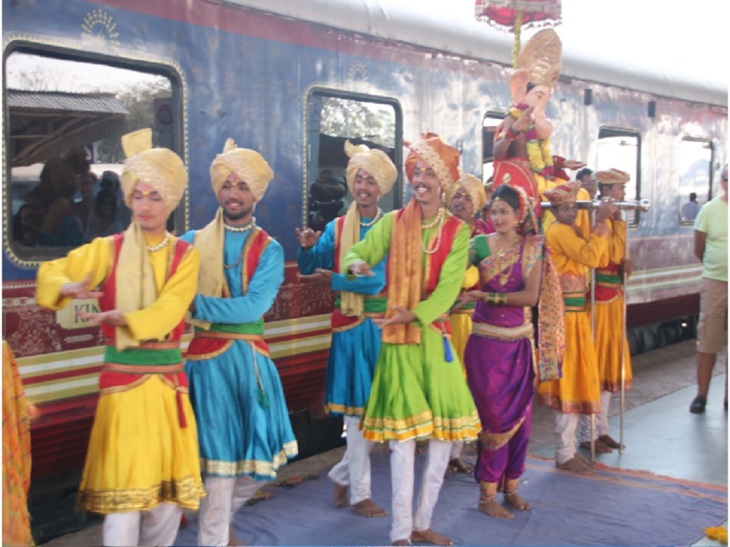

Our group of 60 passengers from all around the world gathered in the terminus lounge, watching a welcoming party of entertainers and introduced to fellow passengers. After all the formalities were completed, we were taken to our luxurious cabins. Each passenger car has four cabins, ensuring privacy. The train contained two restaurant cars, a lounge car for pre or post dinner cocktails and a spa car for relaxation and massage. For those needing ultra-comfort, there were two presidential suites to cater for them.
A personal attendant, who was available 24-hours at a press of a button in the cabin, briefed us about the facilities in the cabin and amenities of the train. Our first meal on the train, a choice of four course meal, was enjoyable and satisfying, guaranteeing service from attentive and friendly waiters of our new home on wheels.

Our first stop in the morning was at the city of Nashik, an ancient holy city situated on the banks of Godavari River, known as the Ganges of the south. As the fourth largest city of Maharashtra after Mumbai, Pune and Nagpur, Nashik is best known as one of Hindu pilgrimage sites.
The Godavari River, the second longest river in India, is sacred to Hindus, thousands of whom take a bath in the river as a rite of cleansing. This is also the place where Hindus come to perform funeral rites and rituals for deceased members of their family. Legend has it that Lord Rama spent 14 years in exile in Nashik which hosts the famous Kumbh Mela, a religious gathering that attracts worshipers from all over the country every year.
But there is more to Nashik than religion and faith. A huge surprise awaited us we were told that Nashik, located about 190 km north of state capital Mumbai, is famous as the “wine capital of India.” In a million years, I wouldn’t have even imaged India to be a wine producing country. The city is home to more than 25 wineries as it has perfect climatic conditions and altitude for growing wine making grapes. Nashik Valley’s first commercial vineyard, Sula Vineyards, have made a name for themselves all over the country.
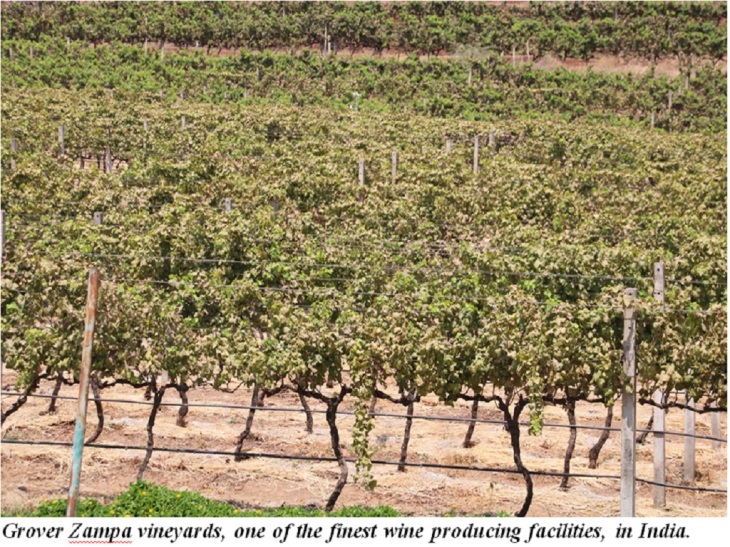
We visited Grover Zampa 400-acre vineyards for an exclusive tour of one of the finest Indian wine producing facilities, walking through rows of Chardonnay, Shiraz and Chenin grapes. The highlight of the visit was when we had to acquaint our taste buds with their finest creations of white, red, rose and sparkling wines, paired with our meal. According to Sushant Soni, the hospitality manager, the winery has been able to capture and maintain high quality of wine through international techniques and practices reliably brought to India.
“We look for the perfect combination of a unique climate and soil for several years before starting the process. We keep the quality high by limiting yields to bring out the complex aromas and delicate flavours of our grapes. Grapes are hand-harvested, and meticulously selected on sorting tables. This helps us to maintain high quality until the wine is finally bottled. We pay attention to every details from vineyards to winery.”
The winery has hired a respected French wine expert to advise them on quality and modernization of the facility. Needless to say, the wines were of superior quality and comparable to some of the finest European wines.
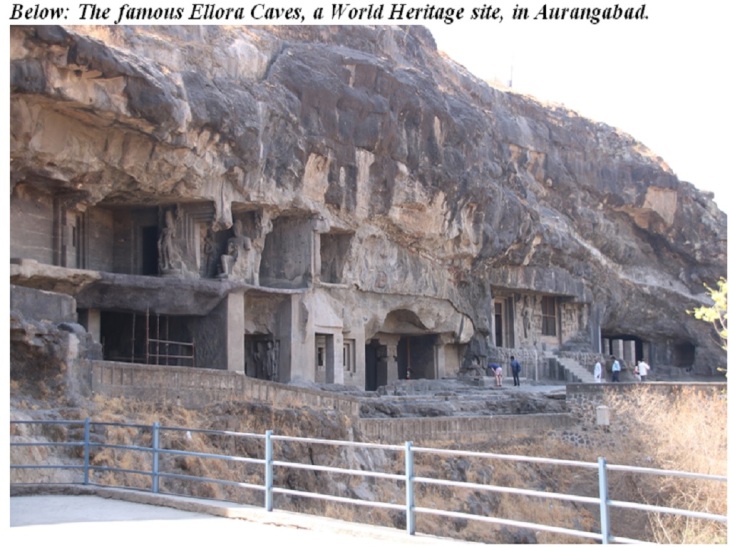
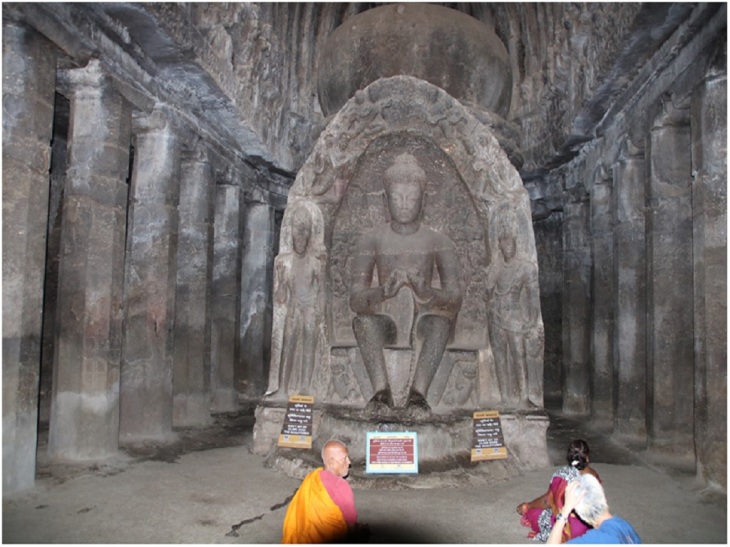
Next day, we were taken to the city of Aurangabad, named after the last great Mughal Emperor Aurangzeb – an industrial town with the famous Ellora Caves, a World Heritage site. It is one of the largest rock-cut monastery-temple cave complexes in the world, featuring Buddhist, Hindu and Jain monuments and artwork, There are over 100 caves at the site, all excavated from the cliffs in the Charanandri Hills, 34 of which are open to public. Although the caves served as monasteries, temples and a rest stop for pilgrims, its location on an ancient South Asian trade route also made it an important commercial centre in the Deccan region.
Another World Heritage site and an architectural marvel of its time that we visited at Panchora station was Ajanta Caves. These caves have been masterfully carved and are adorned with sculptures and paintings of Buddhist religious art, depicting universal pictorial art and are known to illustrate the fusion between Buddhist and Hindu faith.

A welcome relief from caves and temples came when we arrived in beautiful Goa, India’s smallest state which was a Portuguese colony as late as 1961 and one of the most popular tourist destinations in India. Lined with over 30 golden beaches, peppered with stunning architecture and simmering with wonderful street food, it’s not surprising that it has become more popular with tourists, attracting estimated 2.5 million visitors each year, including 400,000 tourists.
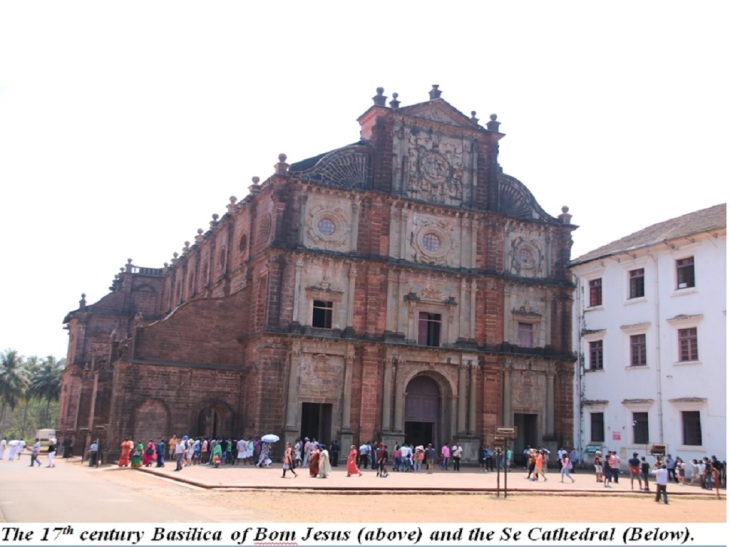

Goa’s population consists of a mixture of Hindus and Roam Catholics, with 65 per cent Hindu, 24 per cent Christian and a smaller percentage of Muslims. Communal violence, so prevalent in other parts of India, is virtually non-existent in Goa which is regarded as one of the most peaceful states in India.
Our tour of the city started with an early morning walk through Fontainhus, the Latin quarter in Panjim, which still has some well-preserved houses built in Portuguese style architecture. It was wonderful to experience the UNESCO World Heritage Walk around Fontainhas with its winding alleyways adorned by tiled-roofed houses in spectacular shades of red and blue.
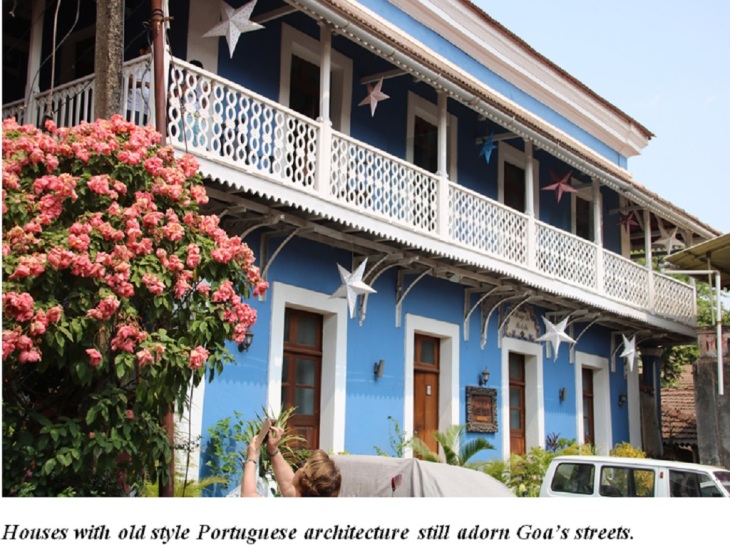
Catholic influence in Goa is clearly represented by the 17th century Basilica of Bom Jesus, the Se Cathedral, the largest Roman Catholic church built by the Portuguese in Asia and the Church of the Lady of the Mount, which has expansive views of over the Mandovi River.
The imposing Basilica de Bom Jesus is famous throughout the Catholic world as it contains the tomb and remains of St. Francis Xavier, the so-called Apostle of the Indies. St. Francis Xavier’s missionary voyages became legendary throughout the East.


Right across from Basilica de Bom is the Se Cathedral which was built in 1562 and finished 90 years later. One of its bell towers collapsed in 1776 after it was struck by lightning.
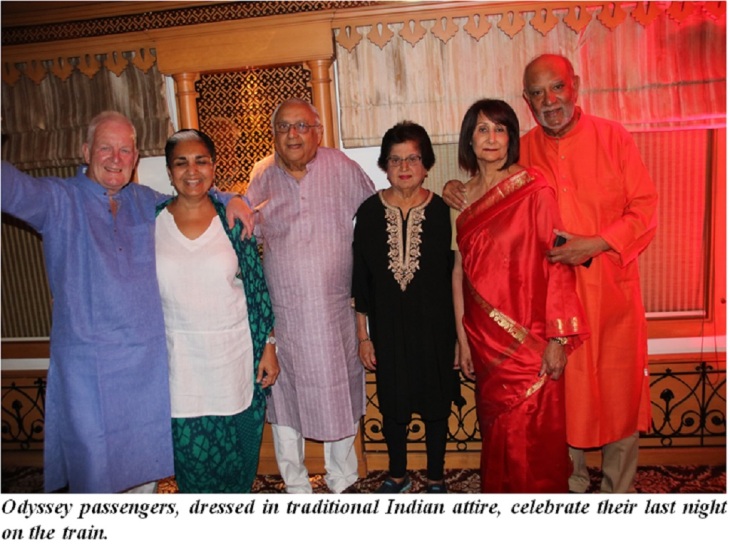
After visiting churches, we were taken to a delightful outing at the Sahakari Spice Farm, providing a valuable lesson in Indian herbs and spices, followed by a delicious traditional Goan lunch. This tropical spice plantation is scattered across 130 acres of lush vegetation. One of the most unique spices grown here is vanilla. It was an interesting experience to tour the spice plantation’s short guided tour.
The last day on the train was fabulous as all passengers enjoyed a lobster dinner and the train manager later hosted a party with music and free drinks all night. Passengers were presented with traditional Indian attire, courtesy of Deccan Odyssey and encouraged to wear them to the party. Women dressed in saris and men in kurta pyjamas danced till wee hours and enjoyed their last day on the train thoroughly.
Mansoor Ladha is a Calgary-based journalist, travel writer and author of Memoirs of a Muhindi: Fleeing East Africa for the West and A Portrait in Pluralism: Aga Khan’s Shia Ismaili Muslims.
Looks like a great trip
LikeLike
Yes it was. Hope you enoyed reading it.
LikeLiked by 1 person
Hazar imam does not drink alcohol. This article in Ismailimail.blog is a bit concerning.
LikeLike
Thank you for your feedback. This blog post is of Mansoor Ladha’s travel experience to India that he wanted to share with people. This post has nothing to do with His Highness the Aga Khan. This post makes NO mention of the imam or his community. This is Mansoor’s view point about his travel experience.
LikeLike
I totally agree with the response given by the editors of Ismailimail. The article is a factual account of my travels and does not promote alcohol consumption. The Odssey train journey took us to, among other places, to the city of Nashik, a holy Hindu city, famous as the “wine capital of India.” I have already received several positive comments on the article and none negative ones. The writer is making an issue out of nothing.As the Ismailimail editors said: “This post has nothing to do with His Highness the Aga Khan. This post makes NO mention of the imam or his community. This is Mansoor’s view point about his travel experience.” I appreciate Ismailimail editors rightly defending my position and I sincerely theank them for it. Job well done.
LikeLike
Whoever this Shiraz Shariff is is not me the Calgary Shiraz Shariff. I read the article and commend Mansoor for his excellent penmanship. I have know Mansoor for a very long time and consider him my friend.
LikeLike
Thank you Shiraz Shariff of Calgary. Appreciate your comments.
LikeLike
Nice article
LikeLike
Excellent article. Beautiful pictures. Brings back fond memories since I was studying in India.
LikeLike